
iDRAC Service Module 1.0
Installation Guide

Notes, Cautions, and Warnings
NOTE: A NOTE indicates important information that helps you make better use of your computer.
CAUTION: A CAUTION indicates either potential damage to hardware or loss of data and tells you how to avoid the
problem.
WARNING: A WARNING indicates a potential for property damage, personal injury, or death.
Copyright © 2014 Dell Inc. All rights reserved. This product is protected by U.S. and international copyright and intellectual property
laws.
Dell
™
and the Dell logo are trademarks of Dell Inc. in the United States and/or other jurisdictions. All other marks and names
mentioned herein may be trademarks of their respective companies.
2014 - 04
Rev. A00

Contents
1 Introduction..................................................................................................................................5
iDRAC Service Module Monitoring Features............................................................................................................5
OS Information................................................................................................................................................... 5
Lifecycle Controller Log replication into Operating System...............................................................................5
Automatic System Recovery Feature.................................................................................................................6
Co-existence of Server Administrator and iDRAC Service Module......................................................................... 6
Software Availability.................................................................................................................................................6
Downloading iDRAC Service Module.......................................................................................................................6
Accessing Documents From Dell Support Site.........................................................................................................6
Software License Agreement...................................................................................................................................7
Other Documents You May Need............................................................................................................................. 7
2 Preinstallation Setup.................................................................................................................. 9
Installation Requirements.........................................................................................................................................9
Supported Operating Systems..................................................................................................................................9
System Requirements.............................................................................................................................................10
3 Installing The iDRAC Service Module On Microsoft Windows Operating Systems......11
Installing The iDRAC Service Module On Microsoft Windows Operating Systems...............................................11
Silent Installation..............................................................................................................................................11
Modifying The iDRAC Service Module On Microsoft Windows Operating Systems............................................. 12
Repairing The iDRAC Service Module On Microsoft Windows Operating Systems.............................................. 12
Uninstalling The iDRAC Service Module On Microsoft Windows Operating Systems.......................................... 12
Unattended Uninstall Using The Product ID.................................................................................................... 12
Uninstalling Using the Add/Remove Feature....................................................................................................13
4 Installing iDRAC Service Module On Supported Linux Operating System......................15
Preinstallation Requirement for Linux Operating System.......................................................................................15
Linux Install Dependency....................................................................................................................................... 15
Installing The iDRAC Service Module on Linux Operating System........................................................................ 16
Silent Installation..............................................................................................................................................16
Uninstalling The iDRAC Service Module On Linux Operating System....................................................................17
Uninstalling The iDRAC Service Module Using The Uninstall Script...............................................................17
Uninstalling The iDRAC Service Module Using The RPM Command...............................................................17
5 Installing The iDRAC Service Module on VMware ESXi.................................................... 19
Using The vSphere CLI............................................................................................................................................19
Using The VMware vSphere Management Assistant............................................................................................ 20

Using The VMware Update Manager.....................................................................................................................20
Using The Power CLI.............................................................................................................................................. 21
6 Installing The iDRAC Service Module On Citrix XenServer............................................... 23
Installing The iDRAC Service Module on Citrix XenServer On A Running System.................................................23
Installing The iDRAC Service Module on Citrix XenServer during XenServer Installation.................................... 23
7 Configuring The iDRAC Service Module............................................................................... 25
Configuring The iDRAC Service Module From iDRAC Web Interface.................................................................... 25
Configuring The iDRAC Service Module from RACADM........................................................................................ 25
Configuring The iDRAC Service Module from WSMAN......................................................................................... 25
8 Frequently Asked Questions....................................................................................................27
Do I need to uninstall Open Manage Server Administrator before installing or running the iDRAC Service
Module?.................................................................................................................................................................. 27
How do I know that the iDRAC Service Module is installed in my system?........................................................... 27
How do I know which version of the iDRAC Service Module I have in my system?.............................................. 27
What is the minimum permission level required to install the iDRAC Service Module?........................................27
Whenever I try to install the iDRAC Service Module, it shows an error message This is not a supported
server. Consult the User Guide for additional information about the supported servers. What should I do
now?....................................................................................................................................................................... 28
Whenever I try to install the iDRAC Service Module, an error message This operating system is not
supported is displayed............................................................................................................................................28
What are the Linux dependent packages or executables I should install while completing the Linux
installation?.............................................................................................................................................................28
9 Linux Installer Packages..........................................................................................................29

1
Introduction
This guide provides information and step-by-step instructions on how to install iDRAC Service Module on the supported
operating systems.
The Integrated Dell Remote Access Controller(iDRAC) Service Module is a lightweight optional software application that
can be installed on Dell 12G Server or later. The iDRAC Service Module complements iDRAC interfaces – Graphical User
Interface (GUI), RACADM CLI and Web Service Management (WSMAN) with additional monitoring data. You can
configure the features on the supported operating system depending on the features to be installed and the unique
integration needs in a work environment.
The iDRAC Service Module architecture uses IP socket communication and provides additional Server Management
data (OS/device driver) to iDRAC and presents one-to-many consoles with access to Systems Management data
through OS standard interfaces.
iDRAC Service Module Monitoring Features
The services provided by the iDRAC Service Module v1.0 are:
• OS Information
• Lifecycle Controller Log replication into Operating System
• Automatic System Recovery
OS Information
Server Administrator currently shares operating system information and host name with iDRAC. The iDRAC Service
Module provides similar information such as host OS name, OS version, and Fully Qualified Domain Name (FQDN) with
iDRAC. By default, this monitoring feature is enabled. This feature is available even if Server Administrator is installed on
the host OS.
Lifecycle Controller Log replication into Operating System
Replicates the Lifecycle Controller (LC) logs to the OS logs. This is similar to the System Event Log (SEL) replication
performed by Server Administrator. All events that have the OS Log option as the target (in the Alerts page or in the
equivalent RACADM or WSMAN interfaces) are replicated in the OS log using the iDRAC Service Module.
The default set of logs to be included in the OS logs are the same as the logs configured for SNMP traps/alerts. Only the
events logged in the LC log after the iDRAC Service Module was installed are replicated to the OS Log. If Server
Administrator is installed, the monitoring feature is disabled to avoid duplicate SEL entries in the OS log.
5

Automatic System Recovery Feature
You can perform automatic system recovery operations such as reboot, power cycle, or power off after a specified time
interval. This feature is enabled only when the operating system watchdog timer is disabled. If Server Administrator is
installed, the monitoring feature is disabled to avoid duplicate watchdog timers.
Co-existence of Server Administrator and iDRAC Service Module
In a system, both Server Administrator and the iDRAC Service Module can co-exist. If you have enabled the monitoring
features during the iDRAC Service Module installation, then after the installation is complete, if the iDRAC Service
Module detects the presence of Server Administrator, iDRAC Service Module disables the set of monitoring features
that overlap. The iDRAC Service Module keeps polling Server Administrator and its features. At any time if the Server
Administrator service stops, the respective iDRAC Service Module feature is enabled.
Software Availability
The iDRAC Service Module software is available in the
Systems Management Tools and Documentation (SMTD)
DVD.
The software is also available in support site.
Downloading iDRAC Service Module
You can download the iDRAC Service Module software from dell.com/support .
Accessing Documents From Dell Support Site
You can access the required documents in one of the following ways:
• From the following links:
– For all Systems Management documents — dell.com/softwaresecuritymanuals
– For Enterprise Systems Management documents — dell.com/openmanagemanuals
– For Remote Enterprise Systems Management documents — dell.com/esmmanuals
– For Serviceability Tools documents — dell.com/serviceabilitytools
– For Client Systems Management documents — dell.com/OMConnectionsClient
– For OpenManage Connections Enterprise Systems Management documents — dell.com/
OMConnectionsEnterpriseSystemsManagement
– For OpenManage Connections Client Systems Management documents — dell.com/OMConnectionsClient
• From Dell Support site as follows:
– Go to dell.com/support/manuals.
– In the Tell us about your Dell system section, under No, select Choose from a list of all Dell products and click
Continue.
– In the Select your product type section, click Software and Security.
– In the Choose your Dell Software section, click the required link from the following:
* Client System Management
* Enterprise System Management
* Remote Enterprise System Management
6

* Serviceability Tools
– To view the document, click the required product version.
• Using search engines as follows:
– Type the name and version of the document in the Search box.
Software License Agreement
The software license for the supported versions of the operating system of the iDRAC Service Module is on the installer.
Read the license_agreement.txt file. By installing or copying any of the files on the media, you are agreeing to
the terms in license_agreement.txt file.
Other Documents You May Need
In addition to this guide, you can access the following guides available at dell.com/support/manuals.
• The
Integrated Dell Remote Access Controller (iDRAC)
User’s Guide provides detailed information on configuring,
and using the iDRAC.
• The
Dell Remote Access Controller Racadm User's Guide
provides information about using the Racadm command-
line utility.
• The
Dell Update Packages User's Guide
provides information about obtaining and using Dell Update Packages as
part of your system update strategy.
• The
Dell Event Messages Reference Guide
provides information on the event and error information generated by
firmware and other agents that monitor system components.
• The
Dell Lifecycle Controller 2 Web Services Interface Guide
provides information and examples for utilizing the
Web services for Management (WS-Man) Management protocol.
7

8

2
Preinstallation Setup
Ensure that you assess the following before installing the iDRAC Service Module:
• Dell 12G Server or later.
• Minimum firmware version — iDRAC7 1.50.50 or later.
• Read the installation instructions for the operating system.
• Read the applicable release notes files and the Systems Software Support Matrix.
• Read the Installation Requirements to ensure that the system meets or exceeds the minimum requirement.
• Close all applications running on the system before installing the iDRAC Service Module application.
Installation Requirements
This section describes the general requirements of the iDRAC Service Module and provides information on supported
operating systems and the basic system requirements.
Windows
• Microsoft Windows 2008 x64 SP2, Windows 2008 R2 SP1, Windows 2012, or Windows 2012
R2 operating system.
• Appropriate user privileges.
Linux
• Red Hat Enterprise Linux 5.9, Red Hat Enterprise Linux 6.4, Red Hat Enterprise Linux 6.5, or
SUSE Linux Enterprise Server 11 SP3 operating system.
NOTE: Prerequisites specific to an operating system are listed as part of the installation procedures.
NOTE: The iDRAC Service Module can be installed using an User Interface. The installer also supports a silent
installation mechanism.
NOTE: R920, R220, and M820 platforms are supported.
Supported Operating Systems
The iDRAC Service Module support is available on the following 64–bit operating system:
• Microsoft Windows Server 2008 SP2
• Microsoft Windows Server 2008 R2 SP1
• Microsoft Windows 2012
• Microsoft Windows 2012 R2
• Red Hat Enterprise Linux 5.9
• Red Hat Enterprise Linux 6.4
• Red Hat Enterprise Linux 6.5
9

• SUSE Linux Enterprise Server 11 SP3
• VMware ESXi 5.1 U1
• VMware ESXi 5.1 U2
• VMware ESXi 5.5
• Citrix XenServer 6.2
For information on supported operating systems, see the
Systems Software Support Matrix
at dell.com/
openmanagemanuals .
System Requirements
• One of the supported operating systems. For more information on the supported operating systems, see Supported
Operating Systems.
• Minimum 2GB RAM.
• Minimum 512MB of hard drive space.
• Administrator rights.
• TCP/IP connection.
• Computer monitor with a minimum screen resolution of 800 x 600. The recommended screen resolution is at least
1024 x 768.
10

3
Installing The iDRAC Service Module On
Microsoft Windows Operating Systems
The iDRAC Service Module installer installs all the features on the supported operating system and enables the feature
by default.
Installing The iDRAC Service Module On Microsoft Windows
Operating Systems
The iDRAC Service Module installer for the supported operating system is available at dell.com/support.
You can perform a manual or automated installation using appropriate command-line switches. You can install the
iDRAC Service Module through the push mechanism using consoles like OpenManage Essential (OME).
1. From the iDRAC Service Module software, go to the windows folder and run iDRACSvcMod.exe.
The iDRAC Service Module ˗ InstallShield Wizard is displayed. After this the welcome screen appears.
2. Click Next.
The License Agreement screen appears.
3. Select I accept the terms in the license agreement and click Next.
4. Select the Setup Type from the following, and click Next.
• Typical – All program features will be installed (Requires the most disk space).
• Custom –Choose which program features you want to be installed and where they will be installed
(Recommended for advance users).
The Ready to Install the Program screen appears.
5. Click Install to continue with the installation.
You can also click Back to change the preferences.
The iDRAC Service Module is successfully installed.
6. Click Finish.
Silent Installation
You can install the iDRAC Service Module silently in the background without any user console. This can be achieved by
using
iDRACSvcMod.exe /S /v/qn command.
11

Modifying The iDRAC Service Module On Microsoft Windows
Operating Systems
To modify iDRAC Service Module components:
1. From the iDRAC Service Module software, go to the windows folder and run iDRACSvcMod.exe.
The iDRAC Service Module ˗ InstallShield Wizard is displayed. The welcome screen is displayed.
2. Click Next.
3. Select Modify.
4. Enable or disable the features as required.
5. Click Next.
The Ready to install screen is displayed.
6. Click Install to continue the process.
You can also click Back to change the preferences.
The iDRAC Service Module is successfully modified.
7. Click Finish.
Repairing The iDRAC Service Module On Microsoft Windows
Operating Systems
If you want to repair the iDRAC Service Module component that is faulty or non-functional:
1. From the iDRAC Service Module software, go to the windows folder and run iDRACSvcMod.exe.
The iDRAC Service Module ˗ InstallShield Wizard. The welcome screen is displayed.
2. Click Next.
3. Select Repair.
4. Click Next.
The Ready to install is displayed.
5. Click Repair to continue the process.
You can also click Back to change the preferences.
The iDRAC Service Module is successfully repaired.
6. Click Finish.
Uninstalling The iDRAC Service Module On Microsoft Windows
Operating Systems
The iDRAC Service Module can be uninstalled in two different methods:
• Unattended Uninstall Using The Product ID
• Uninstalling Using the Add/Remove Feature
Unattended Uninstall Using The Product ID
You can uninstall the iDRAC Service Module using the product ID in the command line. The Product ID is
64DC2DF2-4A02-4DA4-8FA0-30CBE5A5F6B6.
12

NOTE: This process is recommended, if you do not have the DVD or MSI package during uninstallation.
Uninstalling Using the Add/Remove Feature
The iDRAC Service Module can be uninstalled by using the Add or Remove option from the control panel. To do so, go to
Start → Control Panel → Programs and Features . You can also uninstall by selecting Uninstall after you run the
iDRACSvcMod.exe.
13

14

4
Installing iDRAC Service Module On Supported
Linux Operating System
The complete iDRAC Service Module is packaged in a single Red Hat Package Manager (rpm). The package,
accompanied by a shell script can install, uninstall, or enable/disable the features available.
As the Installer on Linux is a single rpm install, there is no granular install support. You can enable/disable the features
through the scripted installs only.
NOTE: The Installer is available for all iDRAC Service Module supported 64–bit versions of operating systems Red
Hat Enterprise Linux 5, Red Hat Enterprise Linux 6, and SUSE Linux Enterprise Server 11, Citrix XenServer 6.2,
VMware ESXi 5.1 U1, 5.1 U2 and 5.5. There is no support for ESX classic.
NOTE: On repository-based installs like Yellowdog Updater, Modified (YUM), VMware Update Manager (VUM) and
Citrix XenServer supplemental pack, all the features are enabled by default.
Preinstallation Requirement for Linux Operating System
To install the iDRAC Service Module on the systems running the supported Linux operating system, run dcism-
setup.sh.
Ensure that the basic functional requirements are met, such as:
• The OS-to-iDRAC Pass-through feature for USBNIC mode is enabled.
• The IPv4 Network stack is enabled in the Host Operating system.
• The USB subsystem is enabled.
For more information, see the
Integrated Dell Remote Access Controller 7 (iDRAC7) Version 1.50.50 User’s Guide
.
Linux Install Dependency
The following are the list of dependent packages/executable(s) that need to be installed to complete the installation.
Executable Commands Package Name
/sys fileSystem
grep grep
cut, cat, echo, pwd, coreutils
lsusb usbutils
find findutils
Shell Script commands bash
ifconfig net-tools
ping Iputils
15

chkconfig
RedHat Enterprise Linux
• chkconfig
SUSE Linux Enterprise Server
• aaa_base
install_initd
RedHat Enterprise Linux
• redhat-lsb-core
SUSE Linux Enterprise Server
• insserv
/etc/init.d/ipmi OpenIPMI
Installing The iDRAC Service Module on Linux Operating System
1. The available features that can be installed are displayed on the screen. The available options are:
• [1] Automatic System Recovery.
• [2] Lifecycle Log Replication.
• [3] Operating System Information.
• [4] All features.
2. To install the required feature, enter the number of that respective feature.
NOTE: Separate the number of the features to be installed by a comma.
NOTE: To install all the three features select All features option.
3. If you do not want to continue the installation, enter q to quit.
Silent Installation
You can install the iDRAC Service Module silently in the background without a user console. This can be achieved by
using dcism-setup.sh with parameters.
The parameters that can be passed to use dcism-setup.sh are:
Parameter
Description
-h Help: Displays the help.
-I Install: Installs and enables the selected features.
-x Express: Installs and enables all available features.
-d Delete: Uninstall the iSM component.
-w Automatic System Recovery: Enables the Automatic
System Recovery Instrumentation Service
-I LC LOG: Enables the Lifecycle Log Replication
-o OS Information: Enables the Operating System Information
16

-a Autostart: Start the installed service after the component
has been installed.
Uninstalling The iDRAC Service Module On Linux Operating System
The iDRAC Service Module can be uninstalled in two different methods:
• Using Uninstall script
• Using RPM command
Uninstalling The iDRAC Service Module Using The Uninstall Script
The script used for uninstalling the iDRAC Service Module is dcism-setup.sh. Run the shell script to uninstall the
iDRAC Service Module.
Uninstalling The iDRAC Service Module Using The RPM Command
The iDRAC Service Module can be uninstalled using the RPM command rpm -e <rpm name> in the command line.
17

18

5
Installing The iDRAC Service Module on VMware
ESXi
VMware ESXi is factory-installed on some systems. For a list of these systems, see the latest
Systems Software Support
Matrix
at dell.com/support/manuals.
The iDRAC Service module is available as a .zip file for installing on systems running VMware ESXi operating system.
The .zip file follows the naming convention ISM-Dell-Web-1.0.0-<bldno>.VIB-<version>i.zip, where <version> is the
supported ESXi version.
The zip files for the supported ESXi versions are:
• For ESXi 5.1 U1– ISM-Dell-Web-1.0.0-406.VIB-ESX51i.zip
• For ESXi 5.5 – ISM-Dell-Web-1.0.0-406.VIB-ESX55i.zip
Download VMware vSphere Command Line Interface (vSphere CLI) from http://vmwaredepot.dell.com/ and install on the
Microsoft Windows or Linux system. Alternately, you can import VMware vSphere Management Assistant (vMA) to the
ESXi host.
Using The vSphere CLI
To install the iDRAC Service Module software on VMware ESXi using the vSphere CLI:
1. Copy and unzip the ISM-Dell-Web-1.0.0-<bldno>.VIB-<version>i.zip file to a directory on the
system.
2. Shut down all guest operating systems on the ESXi host and put the ESXi host in maintenance mode.
3. If you are using vSphere CLI on Windows, go to the directory where you have installed the vSphere CLI utilities.
If you are using vSphere CLI on Linux, perform the command from any directory.
4. Perform the following command:
For VMware ESXi 5.1: esxcli --server <IP Address of ESXi 5.1 host> software vib
install -d /var/log/vmware/<iDRAC Service Module file>.
For VMware ESXi 5.5: esxcli --server <IP Address of ESXi 5.5 host> software vib
install -d /var/log/vmware/<iDRAC Service Module file>.
NOTE: The .pl extension is not required if you are using vSphere CLI on Linux.
5. Type the root username and password of the ESXi host when prompted.
The command output displays a successful or a failed update.
6. Restart the ESXi host system.
To get or list the information about the installed VIBs, use esxcli --server <IP>software vib get or software vib list.
19

Using The VMware vSphere Management Assistant
The vSphere Management Assistant (vMA) allows administrators and developers to run scripts and agents to manage
ESXi systems. For more information on vMA, see http://vmware.com/support/developer/vima/.
1. Log on to vMA as an administrator and provide the password when prompted.
2. Copy and unzip the ISM-Dell-Web-1.0.0-<bldno>.VIB-<version>i.zip file to a directory on the
vMA.
3. Shut down all guest operating systems on the ESXi host and put the ESXi host in maintenance mode.
4. In vMA, execute the following command:
For VMware ESXi 5.1: esxcli --server <IP Address of ESXi 5.1 host> software vib
install -d /var/log/vmware/<iDRAC Service Module file>
.
For VMware ESXi 5.5: esxcli --server <IP Address of ESXi 5.5 host> software vib
install -d /var/log/vmware/<iDRAC Service Module file>.
5. Enter the root username and password of the ESXi host when prompted.
6. Restart the ESXi host system.
After completing the above steps:
1. Install the Server Administrator Web Server separately on a management station.
2. After installing Server Administrator, enable the Server Administrator Services.
Using The VMware Update Manager
To install the iDRAC Service Module using VMware Update Manager (VUM):
1. Install VMware vSphere 5.x (vCenter Server, vSphere Client, and VMware vSphere Update Manager) on a
Windows 2008 R2 SP1 64-bit server.
2. On the desktop, double-click VMware vSphere Client and login to vCenter Server.
3. Right-click vSphere Client host and click New Datacenter.
4. Right-click New Datacenter and click Add Host. Provide information for the ESXi server per online instructions.
5. Right-click the ESXi host added in the previous step and click Maintenance Mode.
6. From Plug-ins, select Manage Plug-ins → download VMware Update Manager. (The status is enabled if the
download is successful.) Follow the instructions to install the VUM client.
7. Select the ESXi host. Click Update Manager → Admin view → Patch Repository → Import Patches and follow the
online instructions to upload the patch successfully.
The offline bundle is displayed.
8. Click Baselines and Groups.
9. Click create from Baselines tab, mention baseline name and select Host Extension as baseline type.
Complete the rest as per instructions.
10. Click Admin View.
11. Click Add to Baseline (against the uploaded patch name) and select the baseline name that you have created in
step 8.
12. Click Compliance view. Select the Update Manager tab. Click Attach and select the Extension Baseline created in
step 8 and follow the instructions.
13. Click Scan and select Patches and Extensions (if not selected by default) and click Scan.
14. Click Stage, select created Host Extension and follow the instructions.
20
Page is loading ...
Page is loading ...
Page is loading ...
Page is loading ...
Page is loading ...
Page is loading ...
Page is loading ...
Page is loading ...
Page is loading ...
-
 1
1
-
 2
2
-
 3
3
-
 4
4
-
 5
5
-
 6
6
-
 7
7
-
 8
8
-
 9
9
-
 10
10
-
 11
11
-
 12
12
-
 13
13
-
 14
14
-
 15
15
-
 16
16
-
 17
17
-
 18
18
-
 19
19
-
 20
20
-
 21
21
-
 22
22
-
 23
23
-
 24
24
-
 25
25
-
 26
26
-
 27
27
-
 28
28
-
 29
29
Dell iDRAC Service Module 1.0 Administrator Guide
- Type
- Administrator Guide
- This manual is also suitable for
Ask a question and I''ll find the answer in the document
Finding information in a document is now easier with AI
Related papers
-
Dell iDRAC Service Module v2.2 Owner's manual
-
Dell iDRAC Service Module 2.3 Owner's manual
-
Dell iDRAC Service Module 2.x Administrator Guide
-
Dell iDRAC Service Module 2.5.1 Owner's manual
-
Dell iDRAC Service Module 2.5 Owner's manual
-
Dell iDRAC Service Module 2.4 Owner's manual
-
Dell iDRAC Service Module 2.3 Owner's manual
-
Dell iDRAC Service Module 2.x Administrator Guide
-
Dell iDRAC Service Module 3.4.1 User guide
-
Dell iDRAC Service Module 3.4.1 User guide
Other documents
-
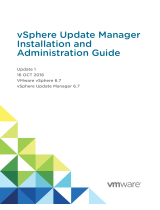 VMware vSphere vSphere Update Manager 6.7.1 User guide
VMware vSphere vSphere Update Manager 6.7.1 User guide
-
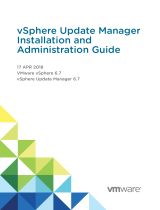 VMware vSphere vSphere Update Manager 6.7 User guide
VMware vSphere vSphere Update Manager 6.7 User guide
-
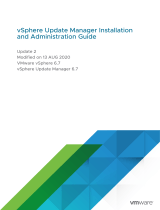 VMware vSphere vSphere Update Manager 6.7.2 User guide
VMware vSphere vSphere Update Manager 6.7.2 User guide
-
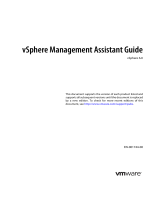 VMware vSphere vSphere 6.0 User guide
VMware vSphere vSphere 6.0 User guide
-
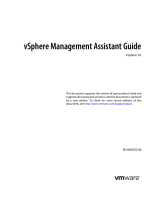 VMware vSphere vSphere 5.0 User guide
VMware vSphere vSphere 5.0 User guide
-
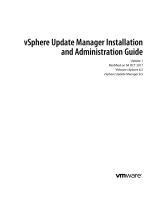 VMware vSphere vSphere Update Manager 6.5 User guide
VMware vSphere vSphere Update Manager 6.5 User guide
-
CyberPower Systems Video Gaming Accessories 6 User manual
-
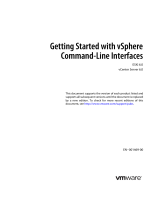 VMware ESXI ESXI 6.0 Getting Started
VMware ESXI ESXI 6.0 Getting Started
-
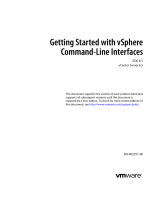 VMware ESXI vCenter Server 6.5 Getting Started
VMware ESXI vCenter Server 6.5 Getting Started
-
Citrix 7.1 CU2 User guide




































